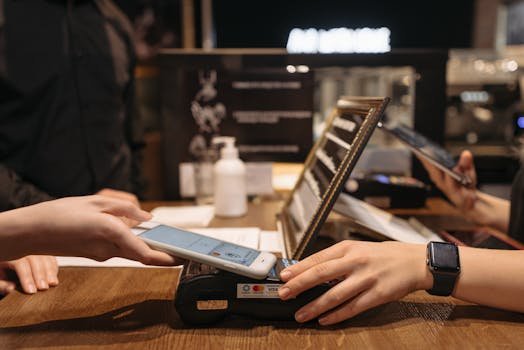Card Stacks That Survive Airports, Taxis & Offline Days
One card is a single point of failure. Full-time travelers need a system: cards that complement each other, work across Visa/Mastercard rails, handle holds at hotels and rentals, beat DCC and weekend FX markups, and still work when terminals go offline. This blueprint shows you how to build a card stack that keeps you transacting—at the airport, in taxis, and on days the internet disappears.
Introduction: Why one card is never enough while traveling
A single “best travel card” isn’t a strategy—it’s a wish. Airports pre-authorize deposits, gas pumps run offline terminals, taxis pick the network they prefer, and some countries add ATM surcharges you didn’t budget for. Meanwhile, Dynamic Currency Conversion (DCC) tries to upsell you to your home currency at a bad rate, and fintechs may add weekend FX markups when markets are closed. Lose the phone that carries your mobile wallet and authenticator and your only physical card? Trip over.
A robust travel setup solves three problems:
- Continuity: If one card, app, or network fails (or is blocked by a merchant category), another works immediately.
- Cost control: You can route purchases to the right card for zero FX fee card benefits, ATM reimbursements, or lounge/insurance perks.
- Security: You isolate risk so a skimmed card, a pre-auth hold, or a lost wallet doesn’t lock your entire cash flow.
This guide breaks down the parts: choosing debit vs credit, designing a four-card stack, handling MCC landmines, preparing for offline days, and building a recovery drill you can run from a lobby Wi-Fi.
The card stack philosophy
Redundancy: payment, geography, network
Redundancy isn’t just “two cards.” It’s multi-axis:
- Payment type: Have credit (for holds/rentals) and debit (for cash/ATMs).
- Geography: At least one issuer from your home region and one from a global fintech (e.g., Wise/Revolut travel debit card) to hedge local outages.
- Network: Carry Visa and Mastercard; acceptance varies by country and even merchant. If one declines, you don’t argue—you tap the other.
Bonus redundancy: register cards in Apple Pay/Google Pay and also carry the physical cards. Mobile wallets are brilliant until your phone dies or gets stolen.
Specialization: different cards for different contexts
Cards shine in different roles:
- Daily spend: 0% FX on purchases, good acceptance.
- Holds/rentals: Credit line absorbs pre-authorization cones so your cash stays free.
- Cash: A debit with ATM reimbursement or low fees.
- Local currency: If you’re staying months, a local card avoids hidden FX at POS and ATMs.
- Online risk: Virtual/disposable numbers for unknown merchants.
Specialization lets you route each transaction where it’s cheapest and safest, not where the cashier points.
Security: isolation of risk
Assume one card number will be skimmed; assume one provider may freeze you for an automated review. Keep:
- Limits separated (no single card with your entire limit).
- Virtual cards for recurring subscriptions; delete if compromised.
- A hold card separate from your daily spend—so hotel/car holds don’t choke your groceries.
Debit vs credit: the fundamental choice
Debit: Direct access, limited fraud protection
Pros: Real-time spending control, easier KYC in some regions, useful for ATMs.
Cons: Fraud hits your cash; recovery can take days. Debit also suffers most from pre-auth holds—that €600 car deposit sits on your balance. Many banks also add foreign ATM and international cards surcharges.
Use when: Withdrawing cash, small merchants who prefer debit, or when a travel debit card (e.g., Wise) can spend directly from your local currency pot at a transparent rate.
Credit: Better protection, rewards, but debt risk
Pros: Best for holds (hotels, rentals), superior chargeback protections, often 0% FX on purchases, and travel perks/insurance. Pre-auths hit available credit, not your cash.
Cons: Requires discipline; missing a payment negates any savings. Not always ideal at ATMs (cash advances are expensive).
Use when: Booking flights/hotels/car rentals, larger POS purchases, merchants with high-risk MCCs (hotels 7011, car rentals 3351—credit approvals tend to be smoother).
Prepaid/debit: Wise, Revolut and similar
Pros: True multi-currency pots; spend in currency and avoid garbage DCC. Great virtual cards, granular controls.
Cons: Usually e-money (safeguarded, not deposit-insured), weekend FX markups if you convert on Saturdays, and ATM allowances vary by plan.
Use when: Paying in local currency you already pre-converted, or routing USD/EUR/GBP from clients straight to spend.
Which to use when
- Holds, rentals, fuel pumps, cruises: Credit.
- Daily POS in local CCY with pre-conversion: Travel debit (Wise/Revolut).
- ATMs: Debit with reimbursements/low fees.
- Untrusted online merchants: Virtual/disposable card.
The anatomy of a robust card stack
Card 1: Primary daily spend (low/no FX fees)
Your workhorse for restaurants, transport, groceries. Requirements:
- 0% FX on purchases, no hidden spread.
- Visa or Mastercard (pick your most accepted network for your route).
- Strong alerts (push notifications per transaction), and rapid freeze/unfreeze in-app.
Workflow: Pre-convert for the weekend if your issuer adds markups; otherwise let network FX handle it and decline DCC.
Card 2: Backup in different network (Visa if primary is Mastercard)
Same capabilities as Card 1, opposite network. If a merchant or region is quirky (e.g., some countries prefer Mastercard terminals), you’ve got it. Keep it stored separately from Card 1 (different pocket/safe). Test it before flights.
Card 3: Credit card for holds/rentals
This is your hold card. Properties:
- Decent limit so a hotel + rental + fuel doesn’t block you.
- Solid travel insurance/collision damage waiver if you’ll use it (check exclusions).
- Chip-and-PIN support (not just signature) for offline kiosks and tolls.
Never use this for daily small spends; keep it clean for pre-authorizations and disputes.
Card 4: Local currency card (if long-term in one place)
If you’ll stay 60–180 days in a country, consider a local bank/fintech card. Benefits:
- Fee-free local POS and ATMs.
- Better merchant acceptance (especially transport, utilities).
- Easier refunds and subscriptions.
Top it from your multi-currency hub (Wise/Revolut) via local rails (SEPA, ACH, or domestic fast payment).
Optional: Offline/embossed card for remote areas
Embossed numbers and offline capability still matter on ferries, planes, rural stations, and some offline terminals. If your main cards are flat and app-dependent, add one embossed card with an offline PIN set.
Build it right from the start with Multi-Currency That Doesn’t Bite.
Card network considerations
Visa vs Mastercard: global acceptance
Both are widely accepted; differences are regional and merchant-specific. Some terminals prefer one set of routing rules. Carry both and don’t take declines personally—just tap the other.
Amex and Discover: limited but valuable in some regions
Amex shines in the US and at premium merchants globally; often weaker at small shops. Discover maps to UnionPay in parts of Asia; acceptance varies. Great bonus cards, not your only lifeline.
UnionPay: essential for China
If China is core to your route, consider a UnionPay-compatible solution or a local card. Acceptance is improving for Visa/Mastercard, but transit kiosks and regional shops can be UnionPay-only.
When card networks fail (network outages)
Sometimes rails wobble. Have a second network, cash buffer, and the ability to pay by QR/local wallet (e.g., PIX in Brazil, PromptPay in Thailand) through your local or multi-currency app.
Physical vs virtual cards
Virtual cards for online purchases (fraud protection)
Spin a dedicated virtual card per merchant. If a site is breached, you kill one number, not your card. Excellent for subscriptions and free trials.
Disposable/single-use cards
For one-off risky checkouts (unknown shops, public Wi-Fi), a disposable number that auto-replaces after use limits exposure.
When you NEED a physical card (hotels, car rentals)
Hotels and rentals often demand to see/tap a physical card in your name. Virtuals won’t cut it, and mobile wallets sometimes fail checks. Carry the plastic.
Offline terminals and embossed cards
What are offline terminals?
Devices that authorize without live connectivity, caching approvals for later (planes, ferries, mountain gas, village stores). They rely on your card’s chip data and offline PIN.
Remote areas, flights, cruise ships
These environments love offline approvals. If your card only does online PIN or your issuer declines offline transactions, you’ll see weird failures—even with money available.
Embossed vs flat cards
Embossing doesn’t guarantee offline approval, but embossed cards tend to be issued by providers that still support older acceptance paths. Handy for legacy merchants.
Why chip-and-signature fails offline
If a terminal needs an offline PIN and your card only supports signature, it may decline. Ask your issuer to enable/set a chip PIN; test it at a bank ATM pre-trip.
Contactless and mobile payments
Apple Pay, Google Pay acceptance
Tap-to-pay is fantastic for speed and tokenized security—no real number exposed. Acceptance is broad in cities, patchy in rural areas. Always carry a chip card backup.
Benefits: speed, security, no physical card needed
Biometric approval + tokenization cut fraud. Lost phone? You can remote lock your wallet without canceling the underlying card.
Limitations: Not universal, requires unlocked phone
Phone dead, app logged out, or country blocks wallet onboarding? Don’t rely solely on mobile pay.
Contactless fallback: have a chip card too
Always keep at least one chip-and-PIN card for terminals that force insert + PIN.
Merchant Category Codes (MCC) and declines
How MCC affects approvals
Banks risk-score by MCC. High-risk categories (e.g., hotels, rentals, gas pumps) get stricter pre-auths. Some cards block certain MCCs by default.
Gas stations, car rentals, hotels (high-risk MCCs)
These merchants place pre-auth holds (see below). Credit tends to approve more smoothly and avoids tying up cash.
Crypto exchanges, gambling (blocked by some cards)
Many issuers block these MCCs entirely or require manual enable. If your work touches these categories, keep a specialized card that allows them, and separate it from your daily spend.
Pre-authorization holds on cards
Why they lock up your balance
Holds are “parking cones” on your limit/balance—common for hotels (incidentals), rentals (deposit), fuel pumps (estimate), cruises (on-file spend). On debit, that’s your actual cash; on credit, it’s your available line.
Credit vs debit for holds
Always prefer credit for holds: your daily cash isn’t frozen and release timelines matter less. Use debit to pay the final if that yields rewards/FX benefits; keep the hold on credit.
Dedicated “hold card” strategy
Carry a credit card used only for holds. At checkout/return, ask the merchant to reverse the unused auth and give you a release confirmation. If a hold lingers beyond norms (e.g., 7–15 days hotels, 10–30 car rentals), call your issuer with the folio/receipt to nudge a manual release.
Recommended card combinations by region
EU-based nomad
- Card 1 (Daily EUR spend): N26/Local EU bank debit or a 0% FX credit for EUR-zone.
- Card 2 (FX & multi-currency): Wise or Revolut (pre-convert to GBP/USD/JPY; spend from matching pot).
- Card 3 (Holds): 0% FX credit card with chip-and-PIN for hotels/rentals.
- Card 4 (Cash/ATM): Debit with ATM reimbursements or low fees; know in-network banks.
US-based traveler
- Card 1: 0% FX credit (primary daily spend).
- Card 2: Schwab-style checking (ATM reimbursements) or a travel debit card for local CCY withdrawals.
- Card 3: Separate credit hold card with high limit.
- Card 4: Wise for receiving EUR/GBP and paying international bills.
Asia-Pacific focus
- Card 1: 0% FX Visa (APAC heavily accepts Visa).
- Card 2: 0% FX Mastercard (backup).
- Card 3: Wise for local CCY pots (THB, SGD, AUD) to dodge DCC.
- Card 4: If China-heavy, add UnionPay or local wallet option.
LatAm regular
- Card 1: 0% FX credit (Visa often rules here).
- Card 2: Wise (USD/EUR pot + BRL/MXN routes where supported).
- Card 3: ATM-friendly debit with good limits (withdraw larger, less often—surcharges are common).
- Card 4: Local account/card if staying >60 days in one country.
The «lost wallet» drill: recovery steps
Immediate card freeze/lock
From another device or hotel phone, freeze the lost cards in-app (don’t cancel unless confirmed stolen). Activate transaction alerts on any remaining cards.
Accessing backup cards
You should have a sealed backup card in your luggage/hotel safe. Move that card into your mobile wallet and test a small purchase. If your phone is also gone, use the physical backup and your printed emergency numbers.
Emergency card replacement services
Many issuers can courier a replacement card internationally. Ask for a cash advance or emergency one-time code if you’re stranded. Keep passport scans and issuer phone numbers in your travel vault.
“ATM ate my card in rural Thailand—now what?”
- Try the same bank branch during business hours; staff can retrieve or cancel the card.
- Freeze the card immediately; keep receipt/time for disputes.
- Use your backup debit for ATM; switch to card-free payments (mobile wallet, bank transfer) where possible.
- Contact issuer for emergency replacement to your next major city/hotel.
Where to keep your cards
Never all in one place
One in your wallet, one in the hotel safe, one sealed in luggage, one in your phone wallet (but carry the plastic too). If your day bag disappears, you still have a working card.
Wallet + hotel safe + cloud backup of details
Store front/back photos of each card (masked PAN) + customer service numbers in an encrypted vault. Never store full PAN/CVV in plain text.
Digital card images (encrypted)
For virtual cards, keep a secure note with the last 4 digits, merchant mapping, and renewal dates. If compromised, you kill one virtual, not your whole card.
Conclusion: Your personalized card stack checklist
Build the system, not just a list of “best cards.” Here’s your 15-minute setup plan:
Before the trip
- Pick Card 1–4 roles (daily, backup network, holds credit, cash/ATM).
- Ensure you have Visa + Mastercard across the stack.
- Set chip-and-PIN on at least one credit and one debit; test at an ATM.
- Add cards to Apple/Google Pay; keep physical cards too.
- For Wise/Revolut, pre-convert weekend spend and set DCC-proof habits (“local currency” always).
- Photograph cards (masked), store issuer numbers and backup codes encrypted.
- Raise daily ATM and contactless limits to realistic levels.
On the road
- Use credit for hotels/rentals/fuel holds; keep a hold card clean.
- Use travel debit for local-currency POS/ATM; decline DCC.
- Withdraw larger, less often where surcharges are fixed.
- Separate storage: wallet vs safe vs luggage; never all together.
- If a card declines, switch networks—don’t argue.
If something breaks
- Freeze the affected card; keep others active.
- Switch to backup card/device; move spend to local wallet if needed.
- Ask merchant for auth reversal on holds; call issuer with folio to expedite.
- Start replacement to your next hotel; keep proof for disputes.
Design once, test before you fly, and your card stack will outlive delayed flights, stubborn taxis, and offline terminals—so you can be cashless abroad without being helpless abroad.
FAQs
What’s the single biggest mistake travelers make?
Using one card for everything and accepting DCC. Build a stack and always choose local currency.
Do I need Amex?
Nice for US rewards and some lounges, but treat it as extra, not a primary abroad.
How big should the credit limit be on my hold card?
Enough to cover hotel + rental + fuel for a few days (often €1,500–€3,000 depending on route).
Can I rely on mobile wallet only?
No. Phones die, get lost, or fail KYC in new countries. Always carry a chip-and-PIN card.
Need a backup plastic? compare limits in Wise vs Revolut vs N26; cash moments = ATM Strategy for Travelers.



